How to Become a Consultant Creating Real Value for Clients?

An Interview with Usman A. Ghani
August 2022
Preface
On August 4, 2022, I had a dialogue with Usman A. Ghani, a widely respected consulting executive with a distinguished record of developing powerful governmental policies and business strategies for a variety of industry leaders. In this dialogue, we discussed how to become a consultant creating real value for clients.
Edward Tse (hereinafter Ed): Today, I'm very delighted to have with me a good friend, somebody I've known professionally for 30 years. He is Usman A. Ghani. We first met at McKinsey & Company. After McKinsey, Usman has had a very illustrative career in consulting. So, Usman, since we left McKinsey, what have you been doing?
Usman A. Ghani (hereinafter Usman): Thank you very much, Dr. Tse. Your work has been truly outstanding and our association goes decades back. I think we learned a lot from each other, and I think your contributions are highly praiseworthy, particularly what you're doing in China and in the Far East. I have been working more on what I call futuristic consulting. Organizations go into vertical silos like production, operations, HR, finance, etc. Or they go across processes. What I see in an organization is a whole entity. Therefore, over the last 20+ years l have been researching and finding success stories and building theories that can make organizational integration happen, because that generates more synergy and far greater potential than companies otherwise tend to realize.
I have been inspired by many great people. One is Peter Drucker. Peter and I were disappointed that there were not many integrators at the top level. They were all looking at their favorite functions, particularly those leading to revenue generation, but the rest of the organization wasn't on their radars. So, there was lost potential. We also started looking across companies in terms of joint ventures, alliances, and mergers. The typical classical merger is done mostly by looking at the left side of the balance sheet while the right side is often less emphasized.
This brings us to the field that interests us both. You are well aware from your good MIT education of System Dynamics, which we also call Business Dynamics. I was a part of the system dynamics group at MIT and also taught that for a semester. Looking at the dynamics of how business flows, what kind of scenarios you should or shouldn't accommodate, and what kind of intuitive and counterintuitive insights will come out of the simulation — these are the questions I have been looking at. Then, there are various layers of integration, which is what I have been developing with clients on six continents.
Ed: Fantastic. That's a very comprehensive summary of what you've done. I know that you have served some really prestigious clients over the years. Perhaps you can tell me a little about your client base and organizations served over the years.
Usman: Yes, I served EDS as it was called at that time. I was with them for a couple of years as their senior vice president of marketing. We were working worldwide. Then it was acquired by Hewlett Packard. I felt at that time that EDS hadn't really lived up to the mark, until that point in time. So after McKinsey I had gone back to a real P&L responsibility for this short spell. And before MIT, I also worked for Exxon and Shell. There also I had P&L responsibilities; and I think that consulting alone doesn't really work if you're a “pure” consultant unless you have put your hands and gloves into actual work as a corporate executive and demonstrated real achievement of goals and objectives within budgets.
Ed: You came up with a bestselling book “The Leader Integrator”. Can you tell us what was the main theme in that book?
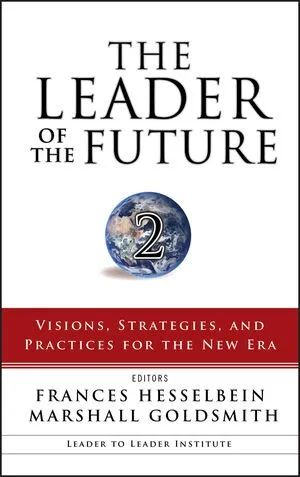
Usman: The idea emerged when I surveyed about 500 different CEOs and board members worldwide. Executives like Lou Gerstner, for example, were focused on integration. They were not tilting toward any one function or the other. In every meeting, they would insist on discussing how things would “come together”
Now, they were not system dynamists by education, but were instinctively applying it in practice. My aim was to observe and distinguish CEOs who made integration possible. There were executives who were insisting on integration, and there were those who were not. I went around to survey about 500 CEOs worldwide (mostly in the West). And using the Pareto ratio, we found 20% CEOs emphasized integration; I called them “Leader Integrators”.
And then I did a second survey to validate my findings. And indeed, the hypotheses did come true. Many CEOs did not ignore integration willingly. They didn’t know if/how integration hasn't happened. Now, why is that? For example, if one has become a CEO after success as a marketing officer, the tendency is to give more time to the marketing people, to get them to do more. If on the other hand, the CEO was an ex-CFO then s/he tends to be more finance oriented. The entourage around the CEOs tends to comprise of her/his ilk, often managers that s/he has worked with before. And that creates this situation of selective isolation or a favored/protective bubble. That also creates a problem.
I think that brought to light an important learning for me (and the chief executives).
Ed: Usman, you have also authored “Meeting Metaphors”, which was published in the Leadership Magazine. Why are metaphors important for leaders?
Usman: They say a picture is worth a 1,000 words. In my opinion, a metaphor is worth a 1,000 pictures. Further, a metaphor can create a more dynamic effect. For example, if you talk about people crossing the bridge or handshaking with each other, it clearly flashes a movie in your mind. Similarly, if somebody talks about reaching a goal with excellence, obviously, you are imagining some movement there over time.
So, again I did more of research, which is a prerequisite for solid work. I observed over 1,100 meetings of boards and CEOs over a 12-year period. I saw that some meetings of the boards and top management teams were highly successful, and some were failures. I examined their agenda. They were all following the agenda and classical meeting rules. What I found was that board members, chief executives, and teams who were aware that a metaphor prevailing in their thinking was defeating their purpose were able to identify that metaphor and then replace it with another more appropriate metaphor to build their thinking and that changed their decision-making framework. And that became a more successful meeting with people feeling accomplished and leaving happily. And so, my research summary was published in the Leadership magazine. There are eight sets of metaphors. And, the ninth is a systems metaphor, which I have identified. I've also specified keywords as well, which you can also pick up in a zoom meeting even if you are not physically there. You can almost foretell the outcome by just listening in on a meeting.
Remember, in a meeting, executives often come up with emotions, they are coming up with thoughts, and they are coming up with all sorts of hints and processes. These signify the prevailing metaphors or pictures in their minds. Identifying these various metaphors, their trajectories, and conscious revisions – all provide a success formula for leadership meetings. That is when the Leadership journal published it. I believe the McKinsey Quarterly also wanted to print it. So, that is another publication I was able to contribute to over the last few years.
Ed: Can this skill be learned by executives? So, is that really innate to a person?
Usman: What I found was that those who had it innately, were successful. Now, the question is, how do you take it to those for whom it's not innate? And that's a developmental project to be implemented in three steps. First is a training program on what are these metaphors and which ones will be most relevant to the challenge at hand.
Secondly, it is for them to sense and write down their own metaphors. Hearing what they are saying as if it is coming from their minds or hearts. And then, the third is to become conscious of this more often. There are full sets of templates that I have developed, for them to see the trajectory of changing metaphors. This has become a very powerful insight and change facilitation by itself. They say, “we were in this metaphor”; “now we are consciously in a different (chosen) metaphor”. “And, it makes sense. Further, as a metaphor is worth a 1,000 pictures and it's dynamic and integrative, your meeting becomes much more goal oriented and successful, more powerful.
Ed: Is this skill also a function of the cultural background of the executive and also the corporate DNA of the company itself?
Usman: Yes, this is an excellent intuition Ed. You are now touching the question of company culture. I'm a student of Professor Edgar Schein; he is the Guru of organization development. I sat with him, wrote a paper for him. What we came up with is that maybe the right way is not to begin with meetings of executives or boards, but to go around and see the culture of the organization. Then distill things from there.
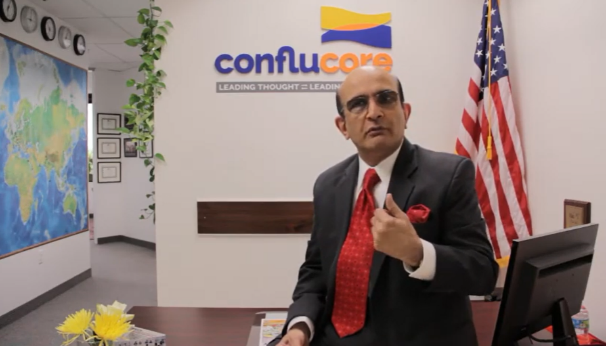
What we then sense are the metaphors. The metaphor prevailing says a lot. So, you can start from the macro, which is the culture; or we can start with top-team meetings which are the micro. Either approach can help you start. What Professor Schein has developed about culture is extremely powerful. It takes more time to go around in an organization like an anthropologist, observe prevailing hints, and filter out what metaphor represents the culture. If you were sitting on two or three board meetings or two or three executive meetings in a week, then you could quickly grasp the top team culture.
So, it depends upon how much time is the client making available and at what levels. You could proceed either way.
Ed: So, the exercise is both physical and also non – physical. We are just talking about it, but somewhere there has to be a very deep appreciation of the cultural aspect and also the organizational aspect. So it requires a lot of skills to orchestrate this kind of overall awareness in a company as well as for capabilities building. Is that a key part of what you do?
Usman: Yes. Is it only a top team problem or an organizational cultural problem? Or both? I think what is ingrained in the corporate culture is a reflection of the top-team culture (and vice versa). My aim then is to focus on both simultaneously; and it's a very important convergence for companies – that is, those who value it. Those who don't believe in metaphors or that metaphors have possessive powers, or that metaphors they entertain in their minds can create effects – they might be unknowingly living conflicting metaphors.
Ed: Is this subject connected to how you were featured in the 2021 bestselling book, Strategic Management, published by McGraw–Hill. What did you talk about in that book?
Usman: The editors and the publisher have honored me by interviewing me and putting it in three pages. They publish a new edition every three years; they include somebody who they believe has done well in strategic management. So, my emphasis is on errors and mistakes which are commonplace in organizations.
What has Apple learned over the years to not sidestep errors? My theory is that successful executives are those who have had rapid cycles of innovation. What they leverage is that mistakes are part of everyday activity and should not be penalized; we learn from them. I was able to find a ratio between successes and failures/mistakes.
Mostly, those who don't dismiss mistakes and build on them, they always excel. This is an attitude. Is it a mistake or is it an opportunity to learn? Or, as happens often, is it an opportunity to reprimand people and put things under the rug? In strategic management, the treatment of errors and mistakes tells a lot about a company’s culture, its innovation predicament, and its planning methods.
Unfortunately, in our Western cultures we hide or even defend a lot of things because people are afraid of being fired. Chris Argyris has shared much about our defensive routines – these are linked to strategy, governance, and innovation. In more holistic cultures, more familial cultures like in the East, companies don't easily fire anybody when they come across honest mistakes. They reward these in fact. In Apple, Steve Jobs used to say all the mistakes you have made are there; lets learn quickly. And thus, there were rapid innovations of the iPhone, the iPod and iPad. So, what I’ve emphasized in Strategic Management is about this prevalent phenomenon and how different organizations handle these. I also link it to Henry Mintzberg’s seminal work on planned strategy versus deliberate strategy. The strategy you plan in the beginning doesn't necessarily roll out. Along the way you disregard some of this stuff, because you have learned some new things. As emergent strategy gets woven in, the executed strategy becomes a combination of the emergent and the planned. Obviously, you will be dropping a few things; then why not your error sources and mistaken processes?
Let's see what happens when you discard some and you pick up new ideas. A CEO I know, of a construction company, is preparing for growth these days, because a lot of construction is going on in the Dallas Fort Worth area. Demand for all kinds of construction equipment and concrete, etc. has gone up. The CEO said they had been making unknown mistakes. “And now we need to fix these first. Because if we don't correct them at our current relatively smaller scale, we will obviously repeat them on the larger scale. And if you repeat them on a larger scale, guess what? We will lose market share and lose revenue. Our competitors will come in. There's no forgiving anyone when growth occurs as fast as it is now happening”. He said, “Gentlemen, let's sit down and look at where and why we have failed in the past. Where have we not been able to supply what?” He went through everything in the minutest detail, even the constitution of cement, all the way to their delivery partnerships. They discovered so many errors that the management team was taken aback because they had been afraid to bring out these in the past, or these errors seemed so small that they had not been magnified until now. So, it was a very good opportunity for the management team to reflect and relearn. And then after the pause, go ahead, full swing. And, they're doing very well ever since.
Ed: That's very impressive. And the consequence of the dynamic strategy was really very insightful. And if we have a translator in the future, we can put more into that, because I think a lot of companies will benefit from that kind of framework. I'd like to turn to your other innovation of SIGOMO. Could you please elaborate it for use by our clients in Asia?
Usman: Boards and top teams sometimes believe that if they have a strategy, everything will be fine. They are only partially correct. The supremacy of strategy is in question. Why? Because a lot of companies today work together, because no one company can do it all alone. There are partnerships, mergers and acquisitions, joint ventures and alliances. And then the supply chain is full of all kinds of dependencies on multiple affiliated supply chains, which we call Multi-Firm Supply Chains (MFSC).
In SIGOMO®, S stands for strategy; I for innovation. G is for governance (of all the processes within; it's not just the corporate governance). O represents organization, which is the structure and the culture. M is marketing; and the final O is for operations. You have to take these six to assess and dynamically align them together. And this also connects to my emphasis on integration. You could get some very good ideas in operations but what if the strategy is not consistent? Will you wait for the next cycle of changes in strategy?
Will you be able to innovate then? Similarly, if you emphasize innovation alone, how might it affect operations and marketing?
There are consultants who say we specialize in innovation. I don't think any innovation can succeed unless there's a strategy, it is marketed systematically, and there is governance around it, and also its operations deliver smoothly.
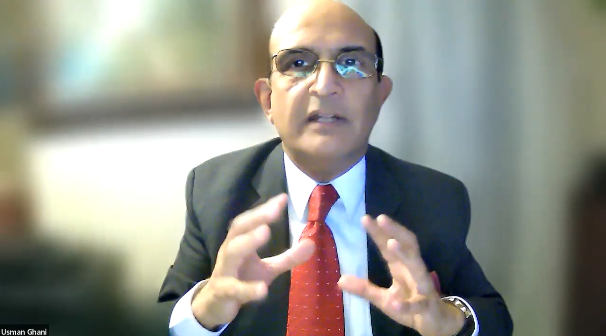
Ed: This is a very powerful framework and methodology. I was wondering to what extent this framework or methodology can be applicable to companies here in Asia. Many Chinese companies are growing very fast. Many of them have gone from almost nowhere to very sizable in a short period of time. In this kind of context and also against the backdrop of an Asian culture, how would you apply SIGOMO? Or do you need to adjust the SIGOMO approach to help these companies?
Usman: I have spent some time in Asia. I originally hail from there. Asia is huge. I'm glad you mentioned China and some of the Far-Eastern countries. I am very impressed with Chinese companies that I know. There are two things that drive their culture, from what I know. One is the family is very important to them, and that causes them not to hire and fire indiscriminately. The second is learning. I'm amazed how the Chinese culture and to a large extent, most Asian cultures, (India, Japan, Korea, Turkey, and others also), emphasize learning and take pride in it more than in “winning” only. And those learning cycles get them farther ahead than many of us here in the west.
Ed: I'm sure many of the clients or companies in China or in other parts of Asia will really want to understand your philosophy and your specific methodology in SIGOMO, because I think many companies need that kind of advice. I've taken a lot of your time Usman. So I would jump to perhaps the last question which is related to consulting. I started by saying that both of us joined McKinsey over 30 years ago. It's been a long time. The world has changed a lot since then, and consulting has also evolved a great deal. So if you take a step back and look at your career and how the world has evolved as well as the role of consulting during this process, what would you advise the younger generations who are interested in getting into consulting?
Usman: This is an evolution question. Maybe a revolution also. First of all, I think what you are doing is an example of what you should be telling our younger compatriots, which is to step aside, think of fresh ideas, keep developing and think dynamically because the real world is dynamic.
The 21st century is going to be about dynamic mental models. You and I have done system dynamics. We must look at dynamics, and that will give you a huge edge. Secondly, to the young fellows, I would say, question the frameworks before you trust them against the realities going on. So you can see the gap. Most likely in the 21st century we need to learn more about dynamic modeling, rather than linear thinking. Then, pick up the most difficult reports that there are and question their methods; they become easy only after 90% of people give up. You pick up the new frameworks, and you make a successful venture for yourself. And that, to me, is the essence of consulting, that you could provide fresh value to your clients.
The young ones should know that it is not the same as it used to be in our days. Previously, fresh MBAs used to go to Bain, BCG, Booz Allen, McKinsey, and a couple others to get a two-year experience on their resumes and, then move on to lucrative jobs in corporations. I didn't go for that. We went for real consulting, to learn, to give, to sense the impact. And when we realized that we had outgrown the frameworks, we moved on; and that's where we are going forward. So, the young professionals shouldn't use consultancies just as springboards, but to use it as a learning platform, both for the firm, for yourself, and even more so for the benefit of the client, who is the most important stakeholder in all our work.
Ed: Usman, if people want to find you, how should they go about it actually?
Usman: Care of Dr. Edward Tse! There are many complementary and supplementary things we can do together in Asia. I think it will be better than I doing everything during my visits to Asia. And these days, Zoom can also be used effectively. After the pandemic, people have become used to it. Ed, feel free to share my email or my phone on your website. Whatever is appropriate to your culture and your protocol. We can always do some good things together. Two brains are better than one, I believe in that.
Ed: So people can go on the website and look at your name and you'll try to contact them directly through your website, right?
Usman: Yes. And they can also catch me on LinkedIn. I'm on that as well. There is a lot of emphasis these days on consultants trying to complete projects within two weeks, three weeks which to me is a rush. To understand the problem, dive into the questions, get people to collaborate, then get the consensus going around and that takes time and demands professional sincerity. Clients are busy people, i.e., the people we work with in the top teams, or even across management. We don't expect them to be readily available over there when we are there. So to me, in any project, the scope determines the time it takes, but any project done in less than a couple of months or maybe even three months is kind of rush. The thought process and change don't really get soaked between the client and the consultant. And that is another important thing for young people to know. And this is also important for clients to know.
Don't hire consultants who are giving you a solution too fast; consulting is not about bravado. Let the consultant go deep into your problem, your issue, your challenge, or your vision and let it sink in. Let them spend time on it. We deliberate, make considered decisions rather than rushed boilerplate solutions. That would be my advice to clients also who care to take a futuristic approach.
Ed: Thank you very much, Usman. That's really a very good concluding advice. Appreciate your time. It's been very good to catch up with you after so many years, and also, I have learned from you about your achievements and how your own experience evolved over the years. It's been tremendous. We are connecting with you and also having this dialogue. Thank you for your time.
Usman: My delightful pleasure.
About the Interviewee
Usman A. Ghani is a widely-respected consulting executive, distinguished by his record of developing powerful governmental policies and business strategies for a variety of industry leaders, including McKinsey & Company, Royal Dutch/Shell Group, Exxon Mobil Corporation, and Hewlett Packard/EDS. Usman has held leadership roles in strategic planning, market growth, operational effectiveness, organizational development, IT, and executive education and has also led cross-functional, multi-cultural, core-process teams globally.
About the Interviewer
Dr. Edward Tse is founder and CEO, Gao Feng Advisory Company, Adjunct Professor of School of Business Administration at Chinese University of Hong Kong, Professor of Managerial Practice at Cheung Kong Graduate School of Business, and Adjunct Professor at the SPACE program of University of Hong Kong. He is a member of Global Future Council on China at the World Economic Forum, as well as a member of advisory boards for private equity and venture capital companies. He started his strategy consulting career at McKinsey’s San Francisco office in 1988 before returning to Greater China in the early 1990’s. He became one of the pioneers in China’s management consulting industry, by building and running the Greater China operations of two leading international management consulting firms (BCG and Booz) for a period of 20 years. He has consulted to hundreds of companies, investors, start-ups, and public-sector organizations (both headquartered in and outside of China) on all critical aspects of business in China and China for the world. He has also advised the Chinese government organizations at different levels on strategies, state-owned enterprise reform and Chinese companies going overseas, as well as to the World Bank and the Asian Development Bank. He is the author of several hundred articles and six books including both award-winning The China Strategy (2010) and China’s Disruptors (2015), as well as the newly published 《变局思维》 (Strategic Thinking in the Era of Mega Changes) (2022). He holds a SM and a SB in Civil Engineering from the Massachusetts Institute of Technology, as well as a PhD and an MBA from University of California, Berkeley.
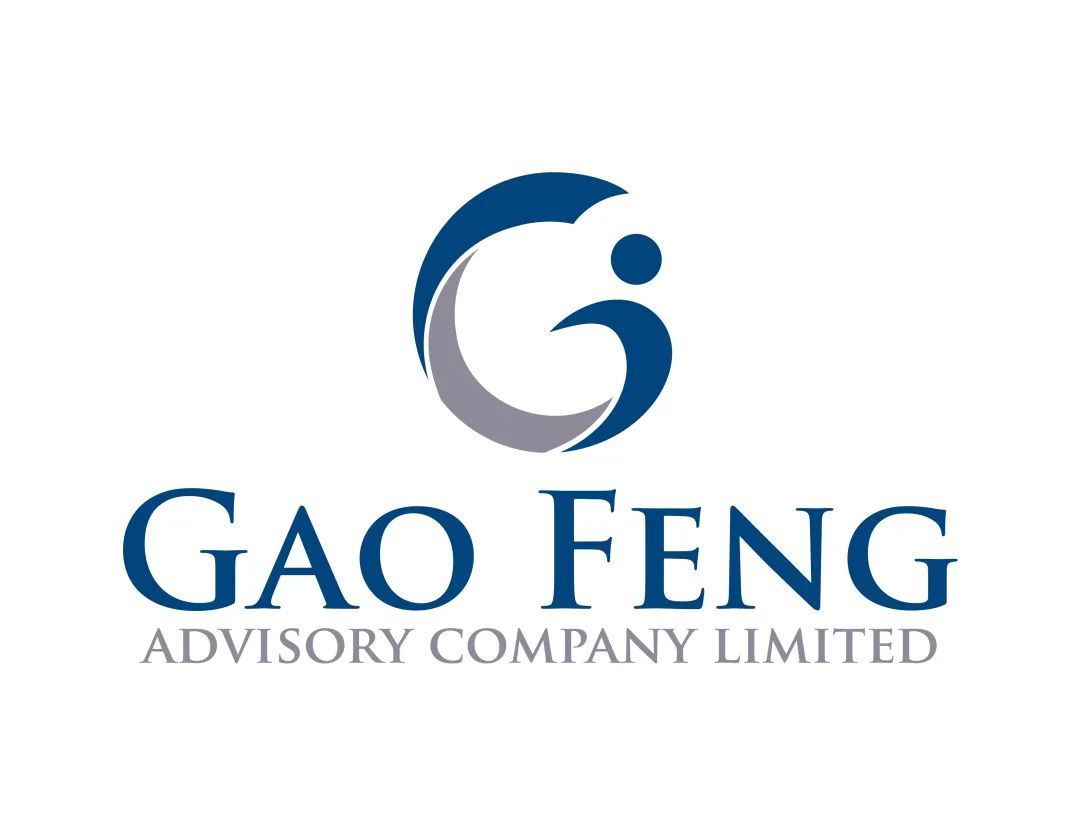
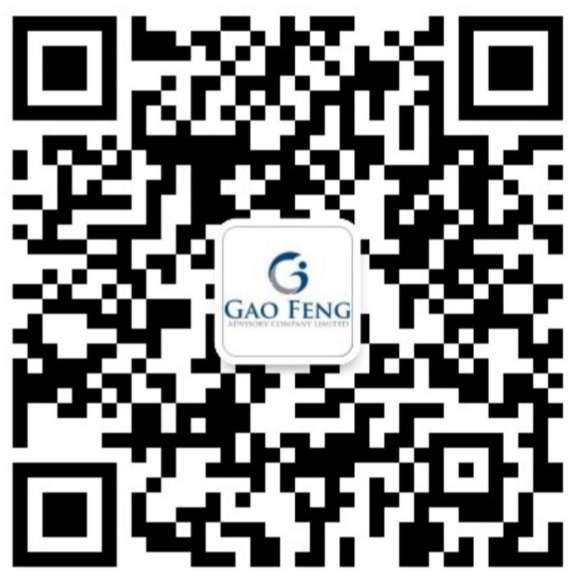
Gao Feng Advisory
Gao Feng Advisory Company is a professional strategy and management consulting firm with roots in China coupled with global vision, capabilities, and a broad resources network
Wechat Official Account:Gaofengadv
Shanghai Office
Tel: +86 021-63339611
Fax: +86 021-63267808
Hong Kong Office
Tel: +852 39598856
Fax: +852 25883499
Beijing Office
Tel: +86 010-84418422
Fax: +86 010-84418423
E-Mail: info@gaofengadv.com
Website: www.gaofengadv.com
Weibo: 高风咨询公司
